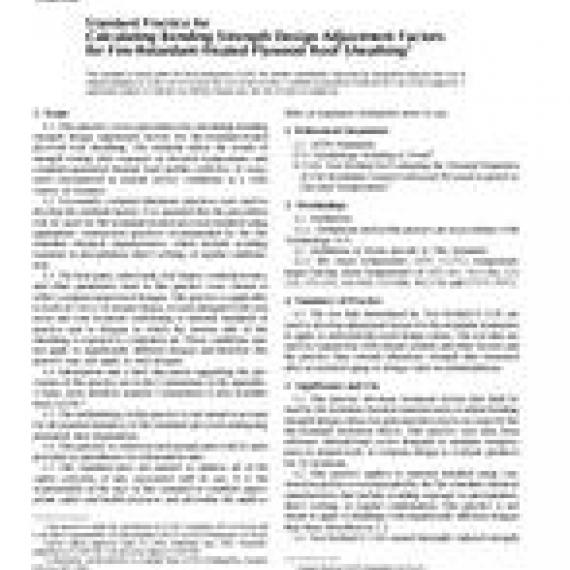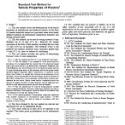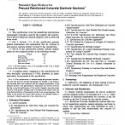No products
ASTM D6305-02
ASTM D6305-02 Standard Practice for Calculating Bending Strength Design Adjustment Factors for Fire-Retardant-Treated Plywood Roof Sheathing
standard by ASTM International, 04/10/2002
Full Description
1.1 This practice covers procedures for calculating bending strength design adjustment factors for fire-retardant-treated plywood roof sheathing. The methods utilize the results of strength testing after exposure at elevated temperatures and computer-generated thermal load profiles reflective of exposures encountered in normal service conditions in a wide variety of climates.
1.2 Necessarily, common laboratory practices were used to develop the methods herein. It is assumed that the procedures will be used for fire-retardant-treated plywood installed using appropriate construction practices recommended by the fire retardant chemical manufacturers, which include avoiding exposure to precipitation, direct wetting, or regular condensation.
1.3 The heat gains, solar loads, roof slopes, ventilation rates, and other parameters used in this practice were chosen to reflect common sloped roof designs. This practice is applicable to roofs of 3 in 12 or steeper slopes, to roofs designed with vent areas and vent locations conforming to national standards of practice and to designs in which the bottom side of the sheathing is exposed to ventilation air. These conditions may not apply to significantly different designs and therefore this practice may not apply to such designs.
1.4 Information and a brief discussion supporting the provisions of this practice are in the Commentary in the appendix. A large, more detailed, separate Commentary is also available from ASTM.
1.5 The methodology in this practice is not meant to account for all reported instances of fire-retardant plywood undergoing premature heat degradation.
1.6 This practice is written in inch-pound units with SI units provided in parentheses for information only.
1.7 This standard does not purport to address all of the safety concerns, if any, associated with its use. It is the responsibility of the user of this standard to establish appropriate safety and health practices and determine the applicability of regulatory limitations prior to use.


































